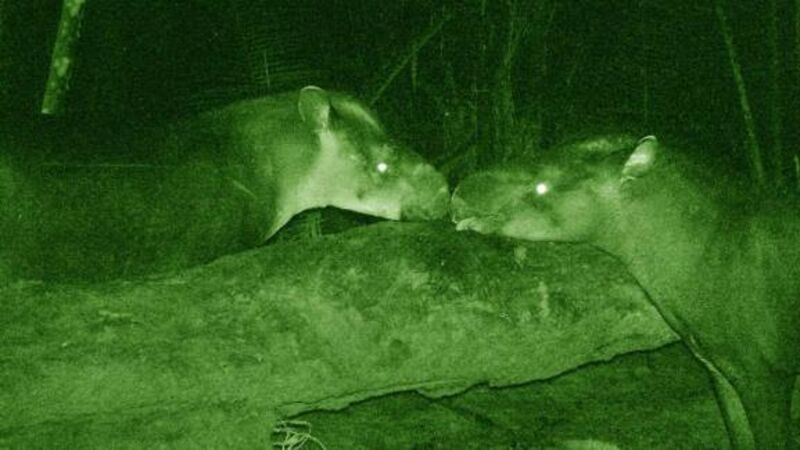Tapir ‘find’ puts science in tangle

Then DNA profiling knocked that idea on the head. In 2009, for example, geneticists suggested there were three species of African dwarf crocodile, not just one. In 2011, it was shown that the iconic Nile crocodile isn’t a single species either. It’s two. Last year, it was the turn of the slender-snouted crocodile; University of Florida scientists identified two types of them. Not every zoologist agrees, but there seem to be seven species of crocodile in Africa, rather than the traditional three.
2013 was a good year for such discoveries. A little fruit-eating relative of the racoon, the ‘olinguito’, was found in the cloud forests of the Andes. What was thought to be a single species of Brazilian wildcat turned out to be two, while three new types of lizard were identified in Peru. The year’s most unusual find was also South American. Scientists, examining tapir skulls, noticed that some of them were very small and had unusual features. This led to a DNA examination of museum and wild specimens, revealing the existence of a ‘pigmy’ or ‘dwarf’ tapir. Not since 1992 when the ‘saola’, a relative of cattle, was discovered in Vietnam, had such as large land mammal become known to Science.
Tapirs belong to the ‘odd-toed’ group of hoofed animals. Their ancestors lost out in grass-eating competition to their even-toed cousins, which include cattle, sheep, goats, deer and a host of other herbivores. At least 15 families of odd-toed ungulate are known to have existed but only three, the horses rhinos and tapirs, have members alive today and most of them are endangered. The pigmy tapir, therefore, is a welcome addition to the impoverished odd-toed list. It’s the only new member of the group identified in over a century.
Claiming that a new kind of tapir has been discovered is a bit misleading. Mario Cozzuol, lead author of the paper introducing the pigmy, acknowledges that ‘local people have long recognised our new species’; indigenous tribes in Brazil and Colombia know the little tapir and hunt it for food. Scientists seldom heed local opinion but these authors see a ‘key role for traditional knowledge in understanding the biodiversity of the region’.
The find is something of an embarrassment to science. The uniqueness of the pigmy tapir should have been recognised a century ago; Theodore Roosevelt shot one in 1902 and sent the specimen to the American Museum of Natural History. ‘The hunters said it was a distinct kind’, he reported, but nobody at the museum noticed that it was special.
In size and shape, tapirs resemble pigs, to which they are not related. The brown or black coat is very short, to avoid entanglement in dense vegetation. An elegant crest on the head, and back of the neck, seems like the work of a master hair-dresser. The curious, beak-like, snout resembles a shortened elephant’s trunk. This ‘proboscis’ is a sensitive flexible ‘hand’ which can move in all directions, seizing vegetation. Their sight is poor but tapirs have a powerful sense of smell and excellent hearing. They are good swimmers. Like the other ‘hindgut digesters’, the horses and rhinos, absorption mostly takes place in a large cecum, rather than ‘up front’ in a rumen as in their even-toed cousins. It’s an inferior system; rear-enders wastefully expel bacteria from the cecum, whereas front-enders absorb those from the rumen further along the food canal, a more energy-efficient process.
The pigmy is the smallest of the tapir tribe. Shy and elusive, it’s about half as heavy as the Brazilian tapir, the second largest land mammal in South America. Until now, it was thought that there were four tapir species, three in South and Central America and one in Southeast Asia. All are classified by the IUCN as either ‘endangered’ or ‘vulnerable’. Brazilian tapirs can be seen in Dublin Zoo and at Fota Wildlife Park in Cork.














